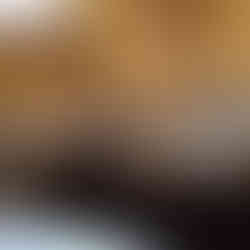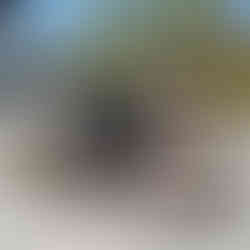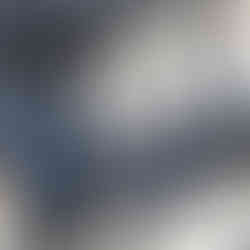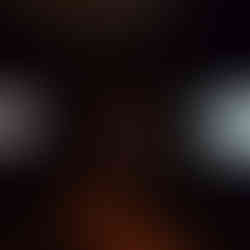2017 California-Pacific Triennial at the Orange County Museum of Art
- artandcakela
- Aug 17, 2017
- 5 min read

California-Pacific Triennial, “Building as Ever,” curated by Cassandra Coblentz, at the Orange County Museum of Art, Newport Beach, California. Photo Credit Kristine Schomaker.
2017 California-Pacific Triennial at the Orange County Museum of Art
By Mario Vasquez
Through September 3rd
Structures are ever-present and ubiquitous in our daily lives. Architecture provides shelter, a place to work, and to escape the elements. Because of this function, structures and architecture give people sites of political contestation, historical and personal memory, and a narrative site that encapsulates our daily lives. The newest incarnation of the California-Pacific Triennial entitled “Building as Ever,” curated by Cassandra Coblentz, at the Orange County Museum of Art, Newport Beach, California, explores the concept of structure and architecture in the work of artists from the Pacific Rim: North America, South America, Asia, and Australia.
This year’s Triennial coincides with the relocation of the museum and the eventual demolition of the current building. When looking at the work in this year’s Triennial, the artists do an excellent job of showing how structures and architecture play a significant role in conveying ideas and concepts in contemporary art. History, memory, identity, globalism, and politics are all addressed in various ways, including but mostly installation, sculpture, photography, and video. Painting is absent. Without painting, there is a feeling that something is missing or incomplete. The works in this exhibition are compelling and challenge the viewer to see what is built, and the effects of structures that can be seen and unseen. The best works address the connections; between architecture and the immigrant experience, the politics of gentrification and development, and personal and historical memory.
Many of the works also focus on the intersection of architecture and memory. In the video and sculpture by Chilean artist Pilar Quinteros, China House Great Journey (2017) the unseen structure is seen through the prism of historical memory. Quinteros explores two sites where immigration, erasure, and trauma converge. In her video, she begins in Santa Ana, California, at the site of the historic Chinatown which was burned down during a race riot in the early 20th century. Quinteros carries a model of the China House located in Corona del Mar, which was demolished over 30 years ago. By walking 20 miles from the Santa Ana site to the Corona del Mar site of the China House, the artist is reflecting on both historical memory, erasure, and the eventual amnesia associated with the buildings and demolition of sites of trauma and loss. Patricia Fernandez uses architecture as means of exploring her family’s past. Her sculpture incorporates objects and ephemera that tell the story of her father’s underground activity against fascist dictator Francisco Franco, including frequenting a bookstore in Paris to read literature that was banned by the Spanish government during the 1950s and 60s. Historical memory play a key in both Quintero and Fernandez’ work. Each shows connections that are both historical and personal.
Another personal experience is that of the immigrant. In the work titled Place On-fold, Carmen Argote uses fabric to create gowns and dresses that relate to both familial and the immigrant experience. At the beginning of the Triennial, Argote hung large, and colorful fabric in the large hall of the museum. Each week during the exhibition, the artist creates gowns that are hung on hangers and can be worn by visitor. The fabric goes from un-formed to formed, thus she relates to the domestic aspects of the immigrant experience; the homemade dress as well the labor of working in dress and sweat shops.
The installation of Beatriz Cortez in Los Angeles Vernacular, 2017, recreates a craftsman bungalow designed by forgotten architect Dan Montelongo. Cortez is exploring the point where race, culture, and historical amnesia overlap. Montelongo’s legacy is revived and placed into focus. The material of the recreation is that of steel and metal, thus creating a sense of permanence, not subject to the pressure of cultural oblivion. Cortez’ work acts as a revival of an architect; whose legacy is worth connecting with those in the present.
Ho Chi Minh City and New York City based artist Trong Gia Nguyen uses photography and drawing to connect the fleeing from Vietnam at the end of the Vietnam War with the family experience migrating to the United States. The drawings are child-like, which connect with childhood experiences as a refugee. They are layered and placed upon photographs. Hung near each piece is a grid that in a sense act as both barrier and lens. Nguyen places the viewer as both participant and witness to an artist whose connections span across the Pacific.
A couple of issues that are addressed in the California Pacific Triennial are gentrification and over-development. In her installation, Nancy Popp explores the conflict between local communities, and the government wanting to develop an area for the 2016 Summer Olympic games in Rio de Janeiro, Brazil. Video and ephemera document the community’s resistance to the tearing down and development of an Olympic village that will destroy the bonds of family and kinship. Lead Pencil Studio, a group of artists based in the Pacific Northwest, explores changes in the neighborhood in well-rendered, large scale works on paper, and by laser cut glass. Olga Koumoundouros’ work explores the death of a preparer of the museum, whose death left a lasting imprint on the structure of the museum. Alex Slade’s photos depict construction and development in downtown Los Angeles. Michele Asselin photographs the elegiac deserted spaces of an abandoned horse race track.
Despite the strong works in the California Pacific Triennial and the eventual relocation of the museum, this year’s Triennial in some respects is problematic. When looking at the artists and the theme, the exhibition has an identity problem. Does this Triennial want to be an exhibition about art of the Pacific-Rim, or about artists working in the Pacific Rim? Many of the artists in the Triennial explore themes and ideas that could be applied to other parts of the world. By making an exhibition about the Pacific Rim, the curator may have missed an opportunity to stand out amongst the many biennials and triennials that are being shown around the world. It would be much more interesting to reflect on the work with a focus of what is happening in the Pacific Rim. It would have been great to see works about the uncontrollable urbanization and building boom occurring in China, or role of architecture in political unrest in Central America. This is the second Triennial for the Orange County Museum of Art. With the Pacific Rim gaining in importance economically, politically and culturally, it would benefit future Triennials to focus on a region as a whole rather than any region where artists work.
#california #AlexSlade #DanMontelongo #PacificRim #CarmenArgote #MicheleAsselin #art #southamerica #CassandraCoblentz #CaliforniaPacificTriennial #NorthAmerica #HoChiMinh #OlgaKoumoundouros #onlineartmagazine #BeatrizCortez #contemporaryart #ChinaHouseGreatJourney #NancyPopp #SaoPauloBrazil #photography #TrongGiaNguyen #PilarQuinteros #orangecountymuseumofart #artandcake #Australia #installation #artmusuem #ArtandCakeLA #fineart #artist #video #BuildingasEver #arts #Vietnam #artreview #sculpture #artexhibit #artmagazine #asia #ArtandCulture #newyorkcity #LeadPencilStudio #PacificNorthwest #NewportBeach






























































































